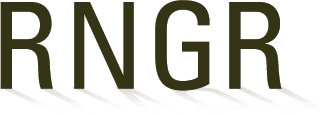Saxifragaceae (Tolmiea)
Tolmiea (menziesii)
Saxifragaceae
Saxifrage family
Tolmiea
menziesii
(Pursh) Torr. & Gray
Tiarella
menziesii
Pursh
Piggy-back plant, youth-on-age
TOME
From lowland hills along Snoqualmie River Valley, near Carnation and Duvall, WA, second growth forest understory between 50 and 900 ft elevation
Tolmiea menziesii occurs from Alaska south, from the coast to the west side of the Cascades through Washington and Oregon to California. It commonly occurs in moist woods, especially near streams.
Plants
Seed
Container (plug)
Deepot 19 (19 cubic inch/315 mL)
7-11 months
Root system: firm plug in container
Fruit is a conical capsule (about 9-14 mm long) containing multiple small (about 0.5 mm) black seeds. Seeds are collected in June and July, when capsule begins to dry and seeds are black in color and can be poured out when capsule is turned upside down. Entire inflorescence is clipped and collected in bags or buckets.
Harvested inflorescences are stored upside down in an open cylindrical plastic container in a dry area with good circulation, out of direct sun and wind, for 1-2 months. This allows further drying of seeds and provides an easy way to collect seeds with minimal chaff as they fall down into container over time. Seeds are then stored dry at 35 F until sowing Seed dormancy is classified as non dormant
none
Unheated greenhouse Sowing method: 0.4 g of seeds are surface sown into germination flats filled with a mix of 70% sphagnum peat and 30% fine bark Sowing either occurs in late September/early October or late March/early April. Trays are irrigated with a fine mist nozzle so seeds are not disturbed.
Germination occurs after 1-2 months
1-2 months
When true leaves appear, plants are fertilized in germination flats with a liquid fertilizer (Fish and Guano, 9-6-2, Monterey) once every two weeks. Plants are moved from germination flats to Deepot 19 containers once they have 4-5 true leaves. Soil is a mix of 95% fine bark, 5% compost, and an organic granular fertilizer (Nutri-Rich, 8-2-4, Stutzman) at a rate of .85g per 19 cubic inch (315 mL) container. Containers are watered every few days and media kept fairly moist.
4-5 months
Plants begin to go dormant as temperatures cool in October.
1 month
Dead leaves are clipped back before winter. Plants are kept in containers in unheated greenhouse until needed by customers throughout fall and winter. Plants should be watered once a month to prevent drying out. Plugs can be pulled from containers and wrapped in bundles of five as customers are ready for delivery from October-April.
1-6 months
Plants can also be vegetatively propagated by clipping leaves where plantlets have developed at base of leaf blades toward the end of summer, and pressing them down into soil at the base to encourage root growth.
Flora of the Pacific Northwest, Hitchcock and Cronquist, University of Washington Press, Third Edition, 1976. Seeds: Ecology, Biogeography, and Evolution of Dormancy and Germination, Baskin and Baskin, Academic Press, Second Edition, 2014. WTU Herbarium Image Collection - Burke Museum, Burke Museum of Natural History and Culture. Web. 20 March 2018 <://biology.burke.washington.edu/herbarium/imagecollection.php?Genus+Tolmiea&Species+menziesii>
McNassar, Bridget. 2018. Propagation protocol for production of Container (plug) Tolmiea menziesii Plants Deepot 19 (19 cubic inch/315 mL) ; Oxbow Farm & Conservation Center Carnation, Washington. In: Native Plant Network. URL: https://NativePlantNetwork.org (accessed 2025/07/06). US Department of Agriculture, Forest Service, National Center for Reforestation, Nurseries, and Genetic Resources.





